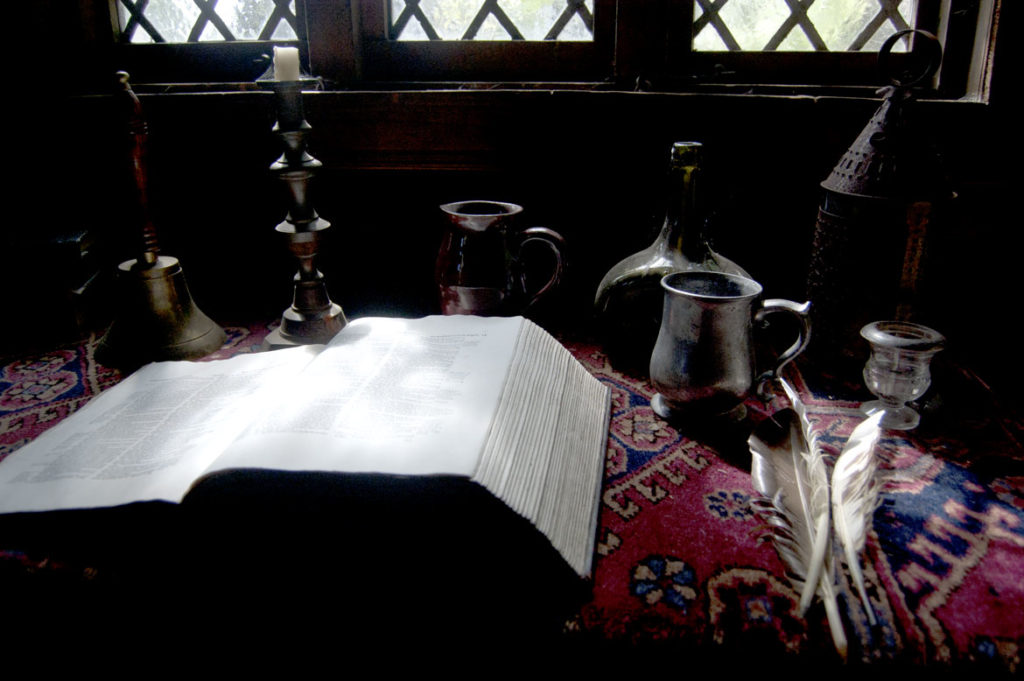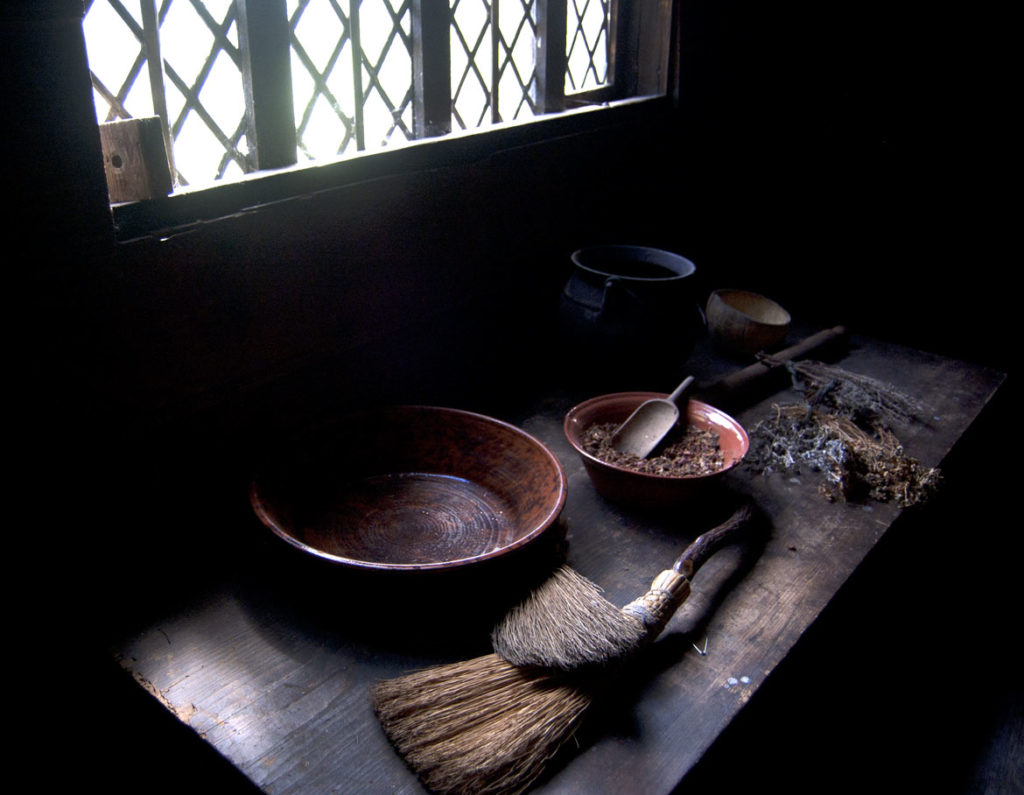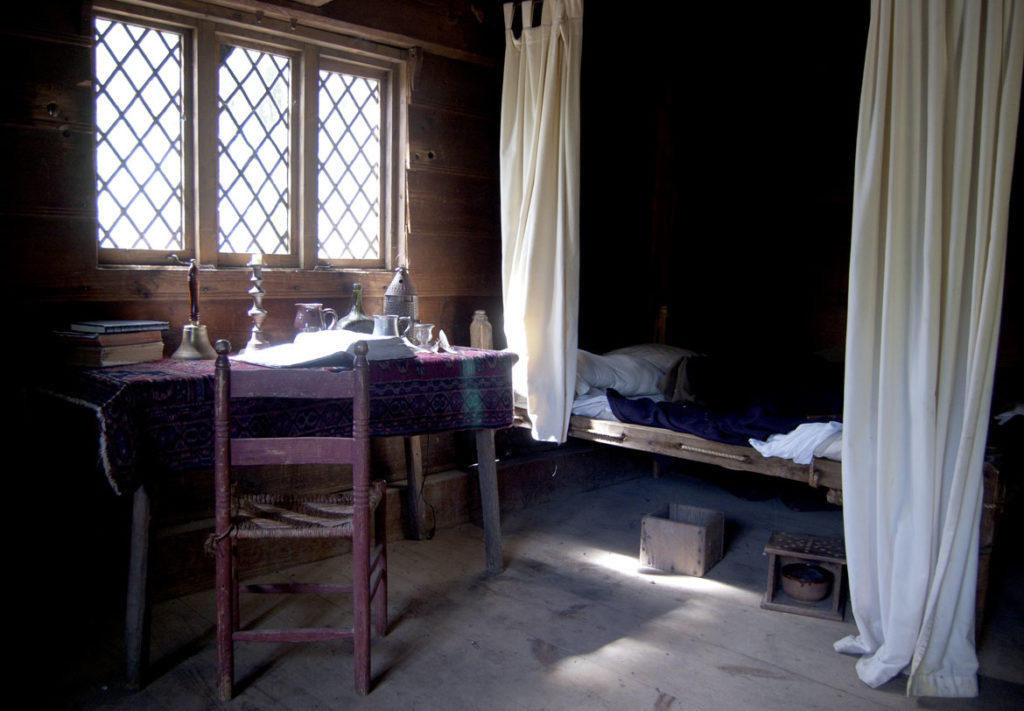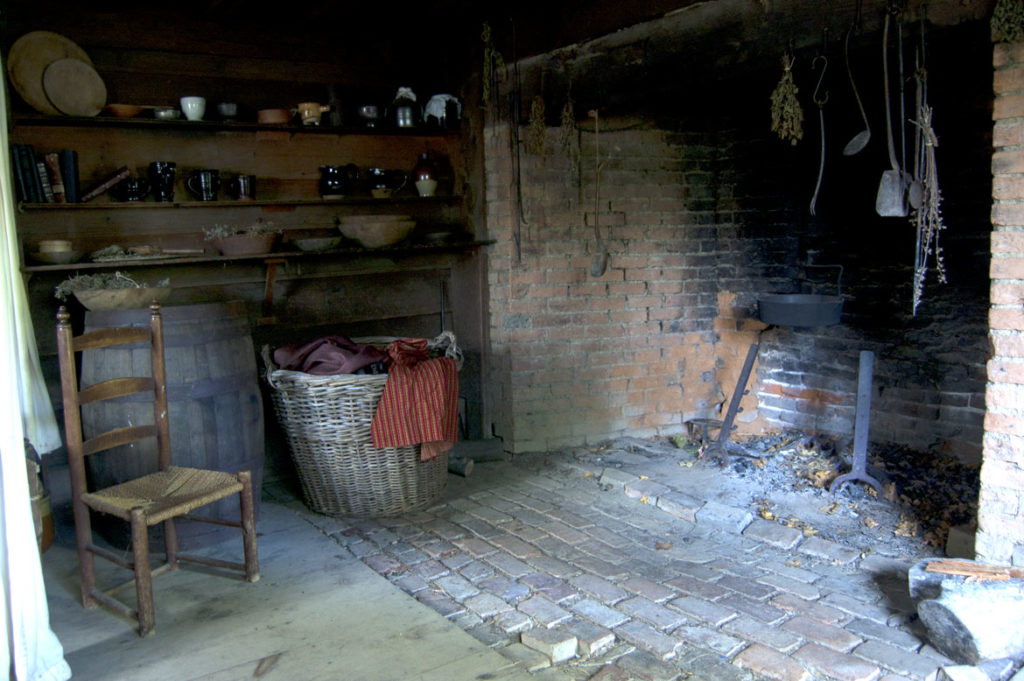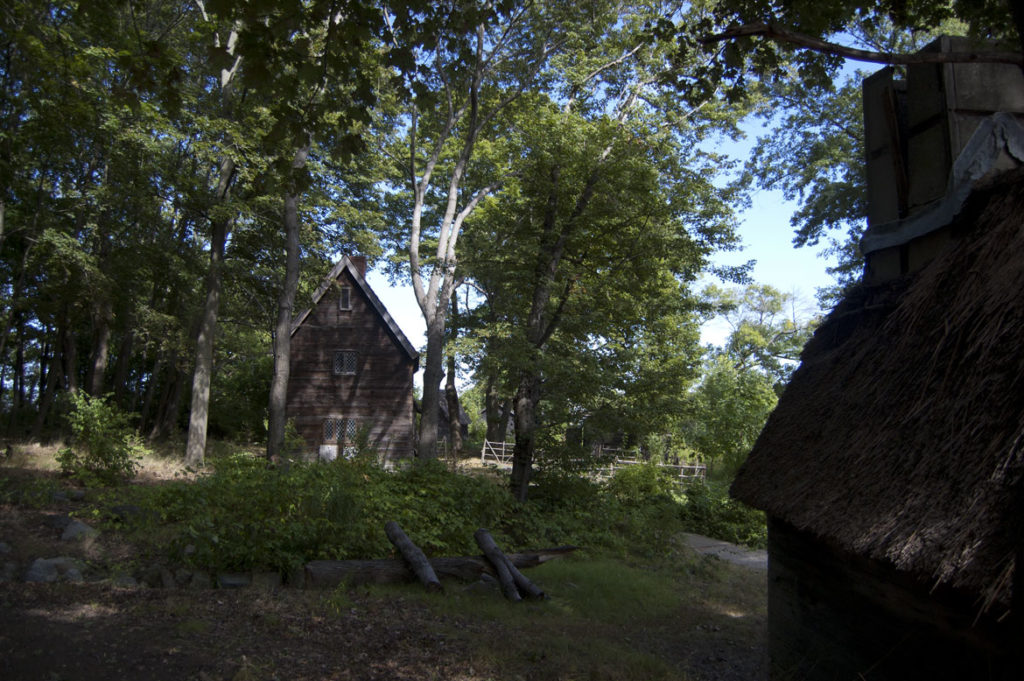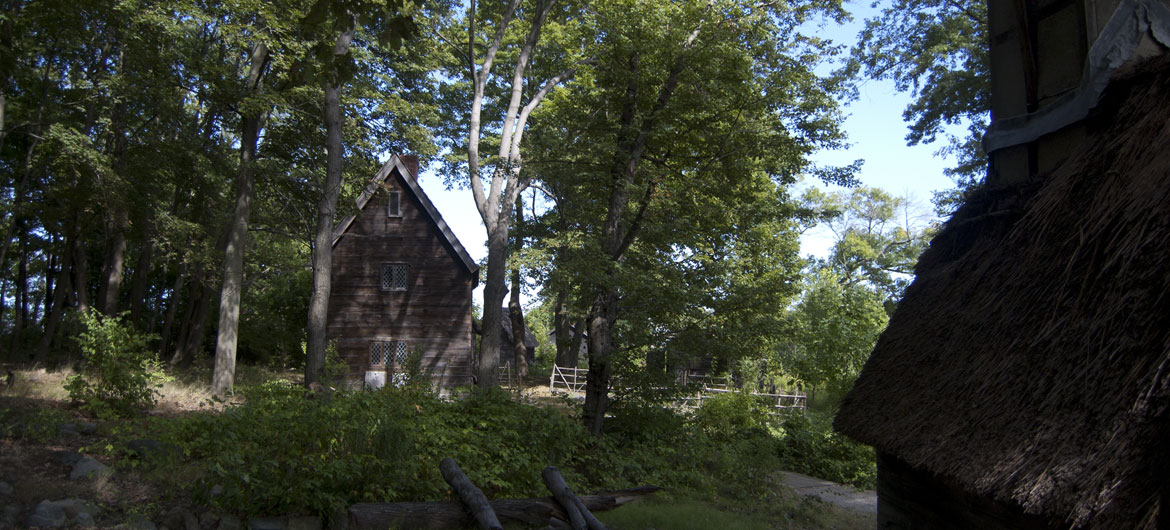Salem, Massachusetts, is a city filled with curious attractions, but one of the most curious is “Pioneer Village: Salem in 1630.” Billed as “America’s First Living History Museum,” it was constructed in 1930 to mark the 300th anniversary of the English invasion of the region and founding of the Massachusetts Bay Colony.
Picture a mini Plimoth Plantation with “dugouts, wigwams, thatched roof cottages, and the Governor’s Faire House. Culinary and medicinal gardens and a blacksmith shop further interpret early 17th-century colonial life.”
What’s curious about it is that it feels hidden—even when you’re at the park where it stands, it’s confusing to find—and it has an intriguingly run-down, overgrown feel, a bit like a ghost town.
See for yourself when Pioneer Village celebrates Halloween by hosting “Lanterns In The Village” on Saturday, Oct. 6, from 6:30 to 10 p.m. Glowing jack-o-lanterns will line the pathways and ghost stories will be read by candlelight in the cottages. Admission is $10. “Dark of Night,” on Saturday, Oct. 13, from 7 to 10 p.m., will offer ghost stories by the fire and in candlelit cottages.

Help Wonderland keep producing our great coverage of local arts, cultures and activisms (and our great festivals) by contributing to Wonderland on Patreon. And sign up for our free, weekly newsletter so that you don’t miss any of our reporting.
Pioneer Village sits on three acres of land in an out of the way park—Forest River Park—a 10-minute drive from downtown, near Salem State University, up against the sea in the southeastern part of the city. (Map.) I visited last year for one of the guided tours the city offers there from June to September on Saturday and Sunday afternoons.
The front of the park has been torn up in recent years to improve the city’s storm water drainage system. “The parking lot will be closed while under construction and parking will be on the streets surrounding the village,” Pioneer Village’s website currently reads. “Access to the village will be on foot through the grassy areas of Forest River Park. Visitors are asked to walk to the beach and wait for the next tour next to the boat ramp.”
In other words, the entrance to the recreated village is hidden on the harbor side, along the beach.
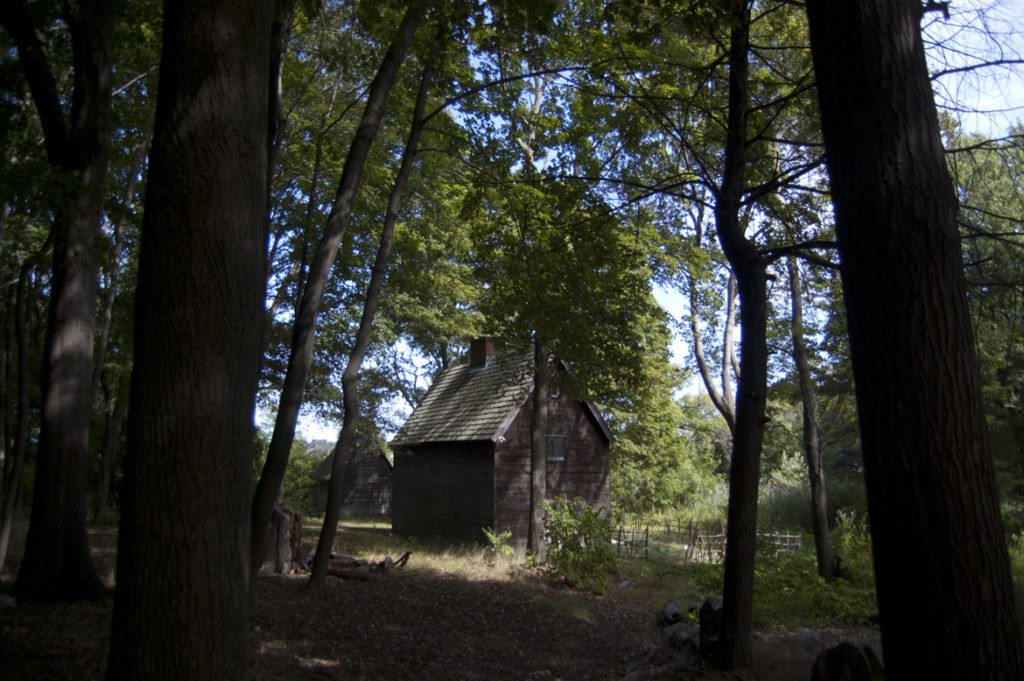
During my visit last year, two guides in period attire summarized the early history of the city. Before the English took over the area and named it Salem, the place was the location of an indigenous village called Naumkeag that was ravaged by illness.
In 1623, Roger Conant sailed from England to the new Plymouth Colony. But he found it didn’t suit him, so he soon left there for an English fishing settlement at Cape Ann. But that enterprise was struggling, so in 1626, he and some of those folks moved south to found the English community of Salem. The Massachusetts Bay Company replaced him with John Endicott in 1628. One of Pioneer Village’s buildings is a recreation of a two-story-tall “fayre house” built for Endicott as he served as governor of the Massachusetts Bay Colony.
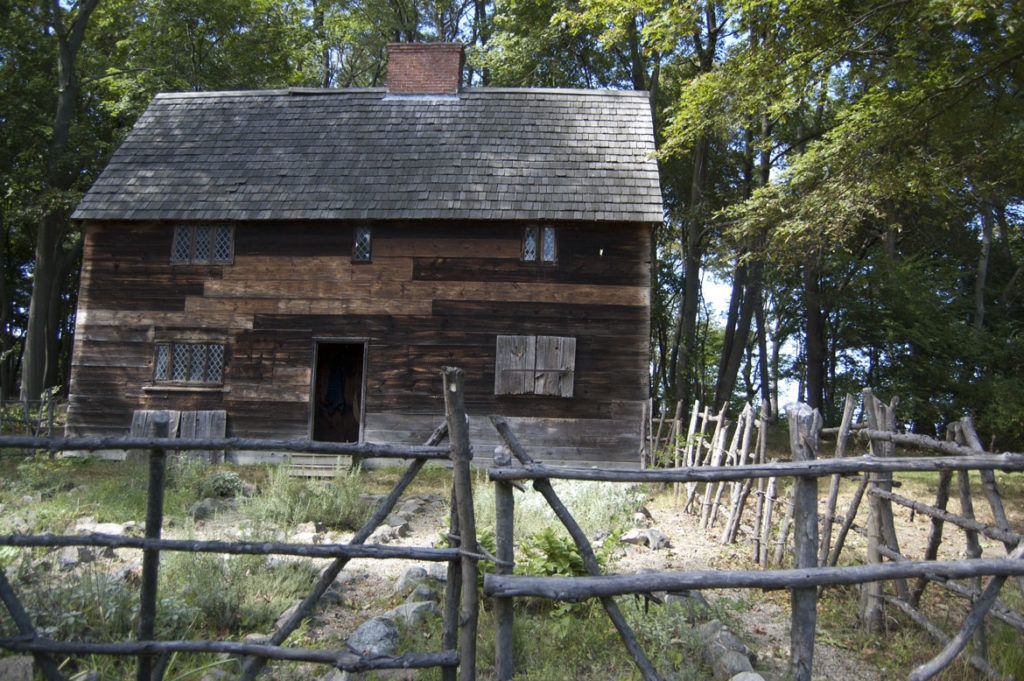
As the 300th anniversary of the English founding of the Massachusetts Bay Colony came around in 1930, Pioneer Village was built to be part of the celebrations. It served as the backdrop that year for reenactment pageants of John Winthrop sailing into Salem in 1630 with a charter for the Massachusetts Bay Colony. (His group wouldn’t stay long, soon heading off to colonize what became Boston.) Replica dugout houses and wigwams were erected and area landscaped. (Photos from the 1930s.)
Pioneer Village was apparently a popular attraction into the 1950s or so. But it fell into such disrepair that plans were made to raze it in 1985. It got a reprieve, was restored and reopened. But it has continued to have a precarious existence. Gordon College operated it from 2008 until the city took over about five years ago. In July, the city floated a proposal to move Pioneer Village to Memorial Drive by Salem Willows.
“The move would give us a lot of opportunities for updating the interpretations,” Kate Fox, director of Destination Salem, told The Salem News. “and it would be really great to have it so close to downtown Salem and on the trolley route.”
Help Wonderland keep producing our great coverage of local arts, cultures and activisms (and our great festivals) by contributing to Wonderland on Patreon. And sign up for our free, weekly newsletter so that you don’t miss any of our reporting.

